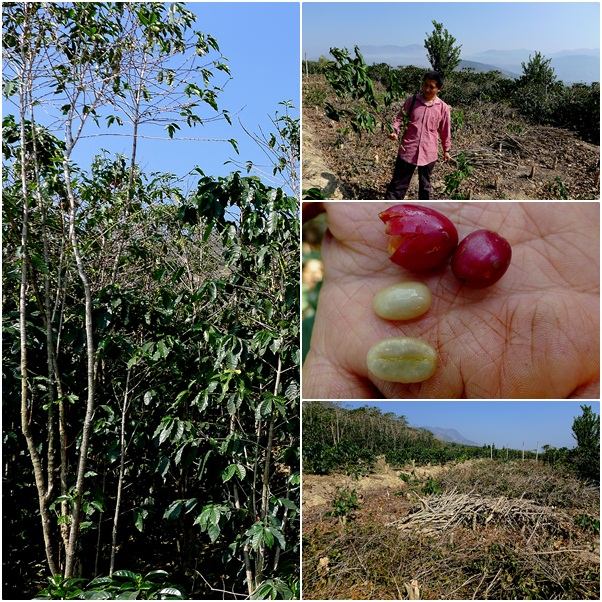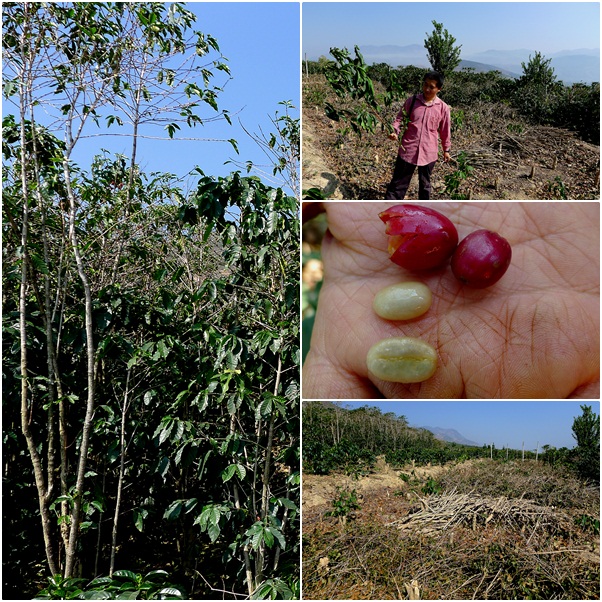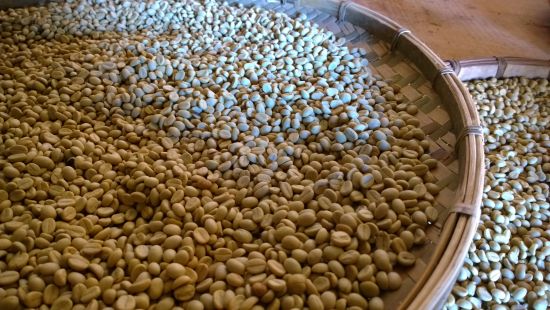Yunnan Coffee Yunnan coffee varieties Tiebika and Bobang Yunnan coffee cultivation history
Yunnan Coffee, China
Yunnan coffee was planted on a large scale in the mid-1950s, and the planting scale once reached 4000 hectares. By the end of 1997, the province's coffee planting area had reached 7800 hectares. At present, the province's planting area accounts for 70% of the country's area, and its output accounts for 83% of the country's total. Whether it is from the planting area or coffee bean output, Yunnan coffee has established its dominant position in China.
profile
The west and south of Yunnan Province are located between 15° N and Tropic of Cancer, most of which are 1000-2000 meters above sea level. The terrain is mainly mountainous and sloping, with large undulations, fertile soil, sufficient sunshine, abundant rainfall and large temperature difference between day and night. These unique natural conditions form the particularity of Yunnan Arabica coffee taste-strong but not bitter, fragrant but not strong, slightly fruity. As early as the 1950s, Yunnan Arabica coffee was very popular in the international coffee market and was rated as the top coffee.
The history of coffee cultivation in Yunnan dates back to 1892. A French missionary brought coffee seeds into Yunnan from abroad and planted them successfully in a valley in Binchuan County, Yunnan Province. More than 30 coffee plants bred from these coffee seeds are still blooming in Binchuan County.
Yunnan coffee was planted on a large scale in the mid-1950s, and the planting scale once reached 4000 hectares. By the end of 1997, the province's coffee planting area had reached 7800 hectares. At present, the province's planting area accounts for 70% of the country's area, and its output accounts for 83% of the country's total. Whether it is from the planting area or coffee bean output, Yunnan coffee has established its dominant position in China.
Yunnan coffee suitable planting areas are distributed in Simao, Banna, Wenshan, Baoshan, Dehong and other areas in the south and southwest of Yunnan Province.
Typica and Bourbon, two classic coffee varieties, are the main coffee cultivars in Yunnan Province. In 1991, Katimo Catimor series varieties (stronger virus resistance and higher yield) were introduced from Kenya. It is a variant of the Arabian species (also known as the small species). Because of the similarity of morphology and habits of these two varieties, they are often mixed and cultivated.
Tibica coffee is native to Ethiopia and southeastern Sudan and is the most widely cultivated coffee variety in the Western Hemisphere. The plants are more robust, but less tolerant to light, and yield more in Hawaii. The top leaf of Tibika is red copper color, which is called red top coffee.
Popan coffee is the second most common variety of Arabica coffee after tipica. The main branch and trunk initially grow upward at 45 degrees, drooping with fruit load, the branch nodes are dense, the results are more, and the yield is higher. But the berries are smaller and ripen slower. Bobang bud tender leaves are green, called green top coffee;
Catimor is an improved variety of the Tibica species, with 25% of the Robusta gene.
the article comes from the network

Important Notice :
前街咖啡 FrontStreet Coffee has moved to new addredd:
FrontStreet Coffee Address: 315,Donghua East Road,GuangZhou
Tel:020 38364473
- Prev

Yunnan Coffee Yunnan Bean varieties the old variety Tieka and the new variety Katimo
Yunnan Coffee Root-seeking Journey the old variety Tieka new variety Katimo mentioned Yunnan coffee. Perhaps the word we hear most is Yunnan small-grain coffee, and most of them will say that Yunnan small-grain coffee is fragrant but not bitter, strong but not strong, so many people classify Yunnan coffee varieties as small-grain species, and the taste evaluation of Yunnan coffee is naturally fragrant rather than bitter, strong but not strong.
- Next

Make your own fresh coffee beans, pick raw beans, roast raw beans.
Just picked coffee 1, raw bean processing: 1, picking is divided into mechanical picking and manual picking. Mechanical picking is suitable for coffee gardens with flat land and large areas of planting. Brazil is the most frequent user of mechanical picking coffee in the world. This method is characterized by low cost and high efficiency, but the coffee beans picked are uneven and of poor quality. Coffee beans with higher quality requirements are generally used.
Related
- Detailed explanation of Jadeite planting Land in Panamanian Jadeite Manor introduction to the grading system of Jadeite competitive bidding, Red bid, Green bid and Rose Summer
- Story of Coffee planting in Brenka region of Costa Rica Stonehenge Manor anaerobic heavy honey treatment of flavor mouth
- What's on the barrel of Blue Mountain Coffee beans?
- Can American coffee also pull flowers? How to use hot American style to pull out a good-looking pattern?
- Can you make a cold extract with coffee beans? What is the right proportion for cold-extracted coffee formula?
- Indonesian PWN Gold Mandrine Coffee Origin Features Flavor How to Chong? Mandolin coffee is American.
- A brief introduction to the flavor characteristics of Brazilian yellow bourbon coffee beans
- What is the effect of different water quality on the flavor of cold-extracted coffee? What kind of water is best for brewing coffee?
- Why do you think of Rose Summer whenever you mention Panamanian coffee?
- Introduction to the characteristics of authentic blue mountain coffee bean producing areas? What is the CIB Coffee Authority in Jamaica?

